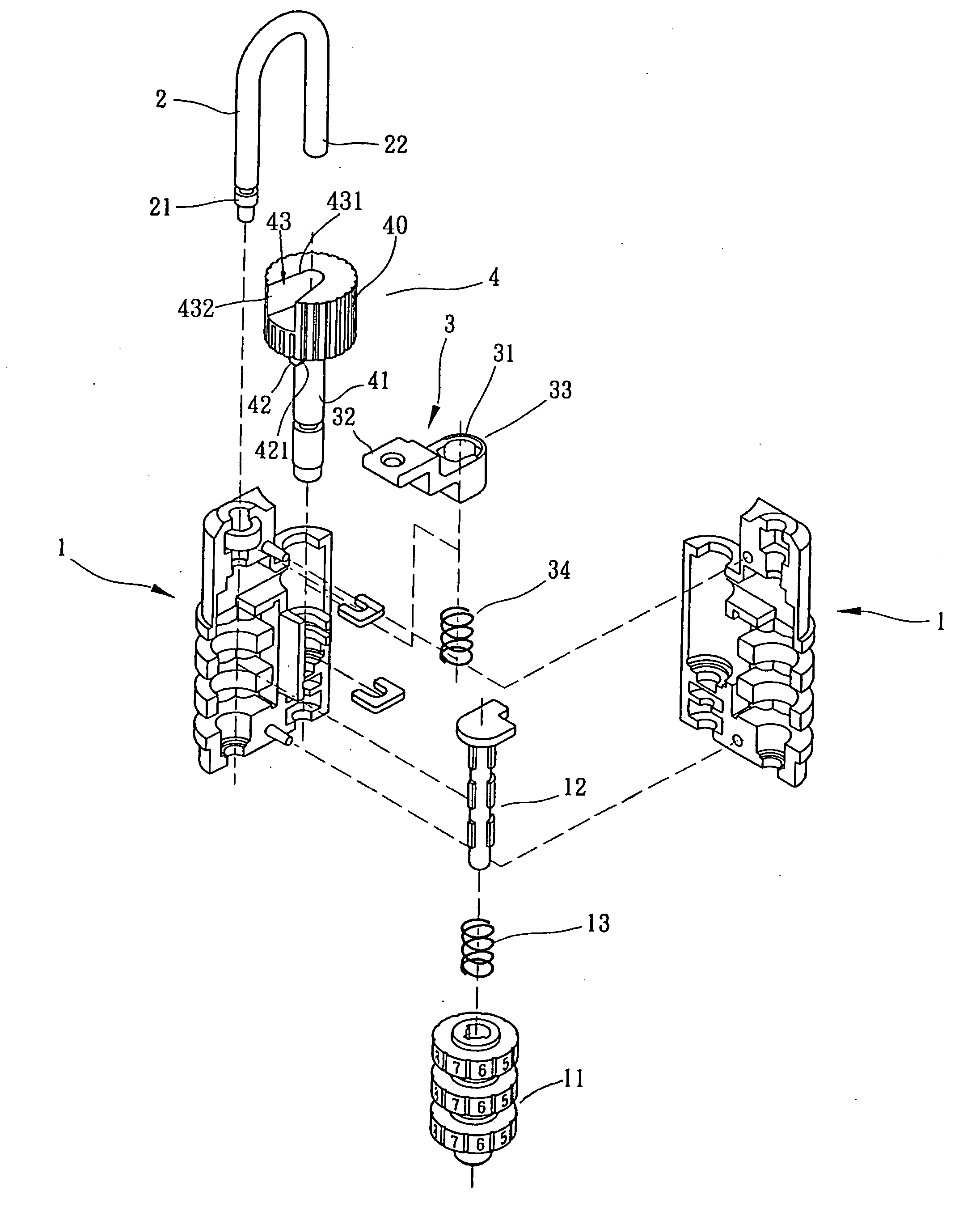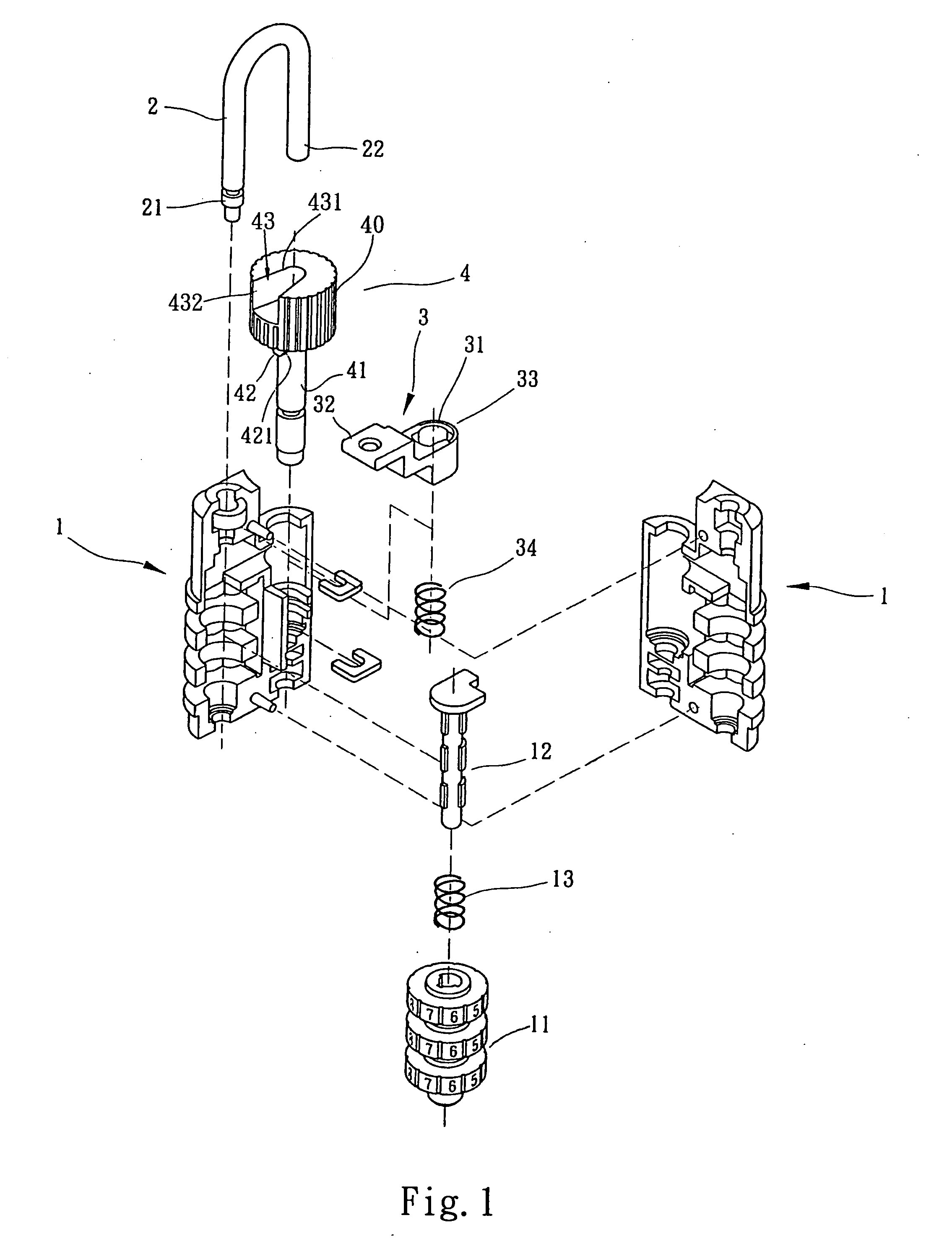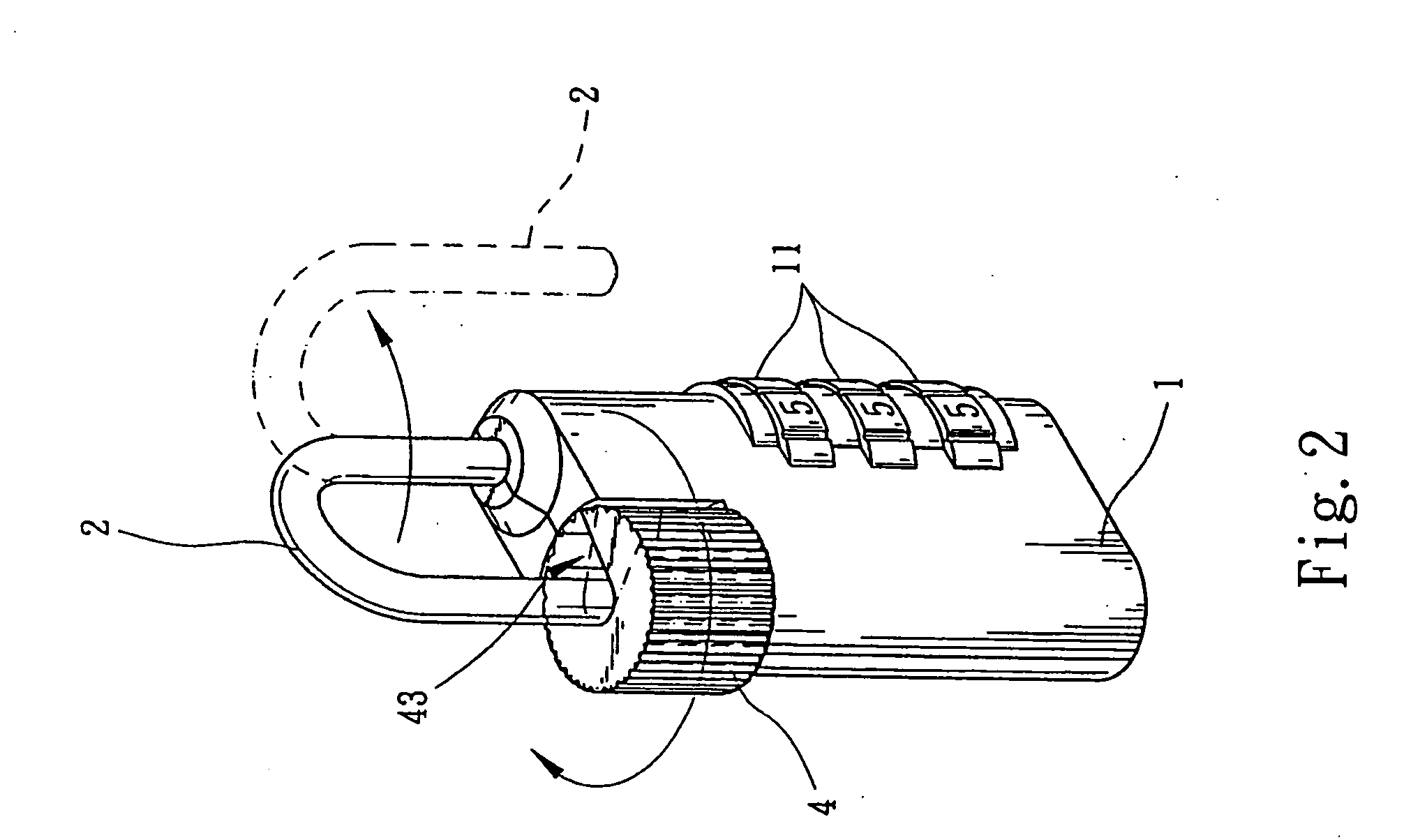Padlock
a technology of padlocks and locks, applied in the field of padlocks, can solve the problems of inconvenient one-hand us
- Summary
- Abstract
- Description
- Claims
- Application Information
AI Technical Summary
Benefits of technology
Problems solved by technology
Method used
Image
Examples
first embodiment
[0030] Please refer to FIG. 1, which shows the present invention. The padlock includes a lock body 1, a shackle 2, a linking member 3 and a restriction device 4. A stem 12 is arranged in the lock body 1. Plural number wheels 11 rotatably mounted around the stem 12. When the number wheels 11 are dialed to the correct number, the stem 12 can be unlocked and moved. A resilient member 13 such as a spring is fitted on the stem 12. The resilient member 13 is compresses between the top end of the stem 12 and the number wheels 11, whereby in normal state, the lock is resiliently forced to abut against the linking member 3. The shackle 2 is substantially U-shaped and has a base end 21 and a free end 22. The base end 21 is pivotally installed in one side of the lock body 1, whereby the shackle 2 can be freely rotated about the base end 21. The linking member 3 is formed with a central through shaft hole 31. The circumference of top side of the shaft hole 31 is formed with a recession 33. Two ...
second embodiment
[0035] With reference to FIG. 5 to FIG. 9, the padlock of the present invention contains a lock body 1b, a shackle 2b, a restriction device 3b, a key operated locking means 4b, a combination locking means 5b and a locking mechanism 6b. A stem 51b of the combination locking means 5b has a recess 53 at top thereof. The recess 53 has a concave 531 at a wall thereof. The restriction device 3b has a restriction button 31b and a driving element 30b. The restriction button 31b is disposed on the lock body 1b and formed with a notch 33b at a top of the restriction button 31b, corresponding to a free end 21b of the shackle 2b. The notch 33b has a gap 33 communicated with a receptacle 32b of the restriction button 31b. The gap 33 has a width larger than the diameter of the free end 21b of the shackle 2b for receiving the same. The driving element30b extended from a bottom of the restriction button 31b has a protrusion 34 thereon for being engaged with the concave 531. The driving element 30b ...
third embodiment
[0036] With reference to FIG. 10 to FIG. 15, the padlock of the present invention mainly contains: a lock body 70, a restriction device 72, a shackle 71, a combination locking means 9 and a key operated locking means 8. The restriction device 72 has a restriction button 722 and a driving element 721. The restriction button 722 is disposed on the lock body 70 and formed with a notch 726. The notch 726 is formed at a top of the restriction button 722 and has a gap 725 communicated with a receptacle 723 of the restriction button 722. The gap 725 has a width larger than the diameter of the free end 712 for receiving the end of the free end 712. The shackle 71 has a base end 711 pivotally installed in the lock body 70 and a free end 712. The combination locking means 9 formed in the lock body 70 for locking or unlocking the base end 711 of the shackle 71. The key operated locking means 8 is formed in the lock body 70 for controlling movements of the restriction device 72 in order the res...
PUM
 Login to View More
Login to View More Abstract
Description
Claims
Application Information
 Login to View More
Login to View More - R&D
- Intellectual Property
- Life Sciences
- Materials
- Tech Scout
- Unparalleled Data Quality
- Higher Quality Content
- 60% Fewer Hallucinations
Browse by: Latest US Patents, China's latest patents, Technical Efficacy Thesaurus, Application Domain, Technology Topic, Popular Technical Reports.
© 2025 PatSnap. All rights reserved.Legal|Privacy policy|Modern Slavery Act Transparency Statement|Sitemap|About US| Contact US: help@patsnap.com



